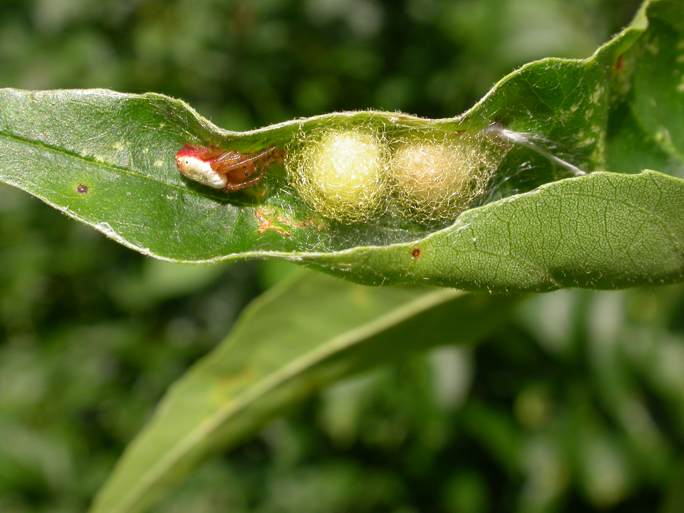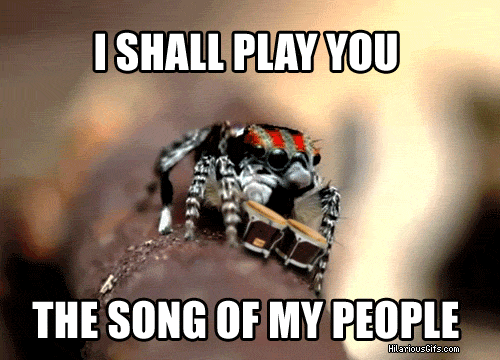Unlike most humans, spiders usually show little to no parental care. About the only time you can ever see a spider taking care of their offspring is when a female will guard/egg sace a nest or carry the babies on her back like some wolf spiders. Salticids are no exception to the rule of parental care. However, when it comes to guarding a mate, there are few creatures more diligent in the invertebrate world than a male salticid.
 |
| Spider guarding her eggs sacs. |
Mate guarding is not uncommon in the world of spiders, though it is most prevalent in web spinning spiders. Amongst the cursorial (wandering) spiders, the usual method of mating is to find a mate, inspect them for suitability through the ritualized mating displays, and then mate if they were found suitable. This whole process can be as quick as a few minutes or as long as several hours. What makes jumping spiders unusual is that while the males go looking for females, they are often seen hanging around immature females who are physically incapable of mating!
Ok, so a bit creepy from the human perspective, but to scientists this makes perfect sense. Why? Well, in many species spider, females will only mate once in their lifetime. If a male can find a female while she is still a juvenile (and therefore incapable of mating) he can be sure he will be the first to court the female and (ideally) mate with her.
 |
| Peacock spiders (Maratus sp.) courting. The male is the colorful one on the right. |
We all know how important it is to find a good mate, but spiders seem to take this to extremes. Some males, upon finding a female, will build a nest (bivouac) by attaching lines of silk to the female's retreat. He will then proceed to follow her and "guard" her from other males until she molts to maturity, sometimes many days later. Once she has fully matured, he will begin the courting process...
Another interesting strategy some males use is to find a female's nest and court her by tapping out a species specific pattern on the walls of her nest. If she is interested, she will either wait for the male to continue and slowly proceed into the nest, or else she will come out and evaluate the male more thoroughly. If she is uninterested, the female will often run out of the nest and chase the male away.
Ok, so the male doesn't really show up with tiny bongos, but it does paint a pretty good mental image doesn't it? As with all of our posts, if you would like more info on today's topic, we would strongly encourage you to dive into the primary literature. The early work of Robert Jackson and Damian Elias are both excellent starting places for this area of research. Finally, we love hearing from our readers and encourage you to post your questions (and comments) in the comment area below. We will answer as soon as we can!
